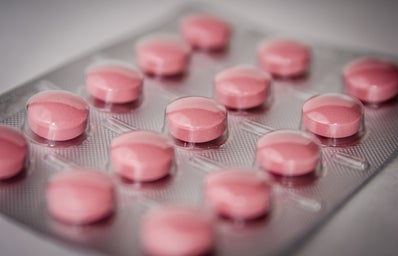You may ask yourself: What is a yeast infection? How did I get it?
I had those same questions during a quick search of symptoms after some not-so-fun days of irritation caused by a bubble bath. A yeast infection — also called Vaginal Candidiasis — is simply an overgrowth of Candida yeasts that naturally occur in the vagina (CDC). It often happens when the balance of natural vaginal flora is upset by changes in pH, antibiotic use that kills healthy bacteria or fluxes in your estrogen levels. While yeast infections are preventable through proper hygiene and limiting risk factors, 75 percent of women have one within their lifetime (Mayo Clinic). That’s just life, ladies.
Here is my advice for a quick recovery:
1. Do not panic
I know it’s easy to get on WebMD and within five minutes be convinced you have 1) cancer, or 2) a sexually transmitted infection (STD). We’ve all been there. Breathe. If you’re not sexually active or have been in a committed long-term relationship (still get tested regularly!), your vaginal problems are more likely to be bacterial vaginosis or a yeast infection. That being said…
2. Refrain from sex
Take it from me: sex, when your vagina and vulva are on fire, is not fun. Nothing can be further from ‘it hurts so good baby’ than the burning sensation you’ll experience if you try to have intercourse with a yeast infection. Please. Don’t. My second piece of wisdom is that if it is an STD, sex is not the greatest plan. Your partner could get infected and hon, STDs are already on the rise. If you must, use barrier methods like condoms. But, please don’t have sex, okay?
Related: 7 Things Your Gynecologist Should Definitely Know
3. List your symptoms
You’ll need this step for a doctor to be able to prescribe you the right medications to treat your infection. Yeast infections have similar symptoms to other vaginal health problems. Here’s a list from the Mayo Clinic:
“Itching and irritation in the vagina and vulva; A burning sensation, especially during intercourse or while urinating; Redness and swelling of the vulva; Vaginal pain and soreness; Vaginal rash; Thick, white, odor-free vaginal discharge with a cottage cheese appearance; Watery vaginal discharge.”
4. Manage the pain
What I did: wear loose-fitting clothes, apply a cold pack and take over-the-counter pain relief medications like ibuprofen or acetaminophen. Some people also recommend vinegar baths (which helped me) and applying probiotic yogurt to help balance the pH. I also took the liberty of picking up some anti-itch relief cream from my CVS. Note: Initially burns when applied. All of these options will provide you temporary relief until you can treat the infection.
5. Consult your doctor
It is possible for a yeast infection to clear up on its own, but if you have persistent symptoms you should probably see your physician. At your appointment, you should expect a pelvic exam and pap smear (my first one; super easy!). These are necessary to rule out STDs and bacterial vaginosis. Once your doctor determines that you have a yeast infection she will prescribe Fluconazole (Diflucan), which treats yeast and fungal infections. It’s an oral tablet that you should only have to take once. Note: it is far easier (more painless) to go this route than use over-the-counter options. If lab results are inconclusive and you are given antibiotics, ask if you can also be prescribed Fluconazole. Pro tip: If you have to make an appointment to see your doctor, do so as soon as symptoms appear. I had my yeast infection for two months.
Related: 5 Reasons Women are on Birth Control Besides Pregnancy Prevention
6. Try over-the-counter options
If your doctor has diagnosed a yeast infection, you have the option to treat with over-the-counter medication. *If you’ve never had a yeast infection before, do not diagnose or treat without medical consultation.* I was unable to fill my prescription and opted for Monistat 1-Day based on my doctor’s recommendation. Treatment involves inserting an “ovule” of medication into your vagina and waiting until the yeast infection completely resolves, about a week. The box also includes cream. Monistat has three options, listed here. The other two, 3- and 7- Day, require multiple applications. The products range from $15-20 and can be found on Amazon, at Walmart, CVS or Walgreens. Note: the medication will burn for minutes to hours until you experience significant relief. There will be discharge. Do not have sex.
Related: Why Your Sexual Health is Important
If you have a yeast infection, relax! It can be exhausting to determine what is happening to our bodies and make sure we get treated properly, especially when it comes to our vaginas. For myself, a yeast infection meant learning about my health and taking the time for self-care. Remember this: you’re more in control of your sexual health now than you were yesterday. Be empowered.


